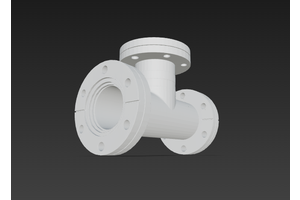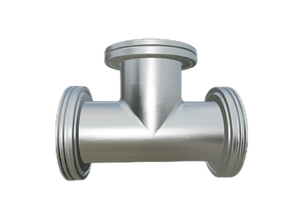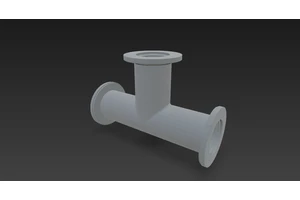Structure and Working Principle of Turbomolecular Pumps
A turbomolecular pump is a type of vacuum pump that uses high-speed rotating blades (rotors) to transfer momentum to gas molecules, creating a directional flow and thus evacuating the chamber. The main advantages of turbomolecular pumps include rapid startup, resistance to various types of radiation, durability under atmospheric exposure, no gas storage or desorption effects, minimal or no oil vapor contamination, and the ability to achieve clean ultra-high vacuum. These pumps are widely used in high-energy accelerators, controlled thermonuclear fusion devices, heavy-ion accelerators, and the manufacturing of advanced electronic components.
Development History
In 1958, W. Becker of the Federal Republic of Germany introduced the first practically viable turbomolecular pump. Since then, various designs have emerged, with the most common being vertical and horizontal configurations.
A turbomolecular pump generally consists of the pump body, a rotor with blades (dynamic blades), stator blades, and a drive system. The peripheral speed of the rotor blades can reach 150–400 m/s, which is comparable to the thermal motion speed of gas molecules. A single rotor stage has a relatively low compression ratio, so a complete turbomolecular pump is composed of multiple alternating rotor and stator stages—often ten or more.
The rotors and stators have similar geometries but opposite blade inclinations. For example, in a design with 20 rotor stages, each rotor is followed by a stator. The stator blades are fixed in place with a supporting ring to maintain a gap of about 1 mm between the moving and stationary blades, allowing the rotor to spin freely between them.
Working Principle
When gas molecules collide with the inclined moving blades, their momentum is altered in a way that preferentially directs them from the inlet side to the outlet side. On the rotor’s left side, molecules striking certain angles (α₁) are reflected back to the inlet, while those striking within other angles (β₁ or γ₁) may pass through the blade gap toward the outlet. On the right side, a similar process occurs, but due to blade inclination and rotation direction, the probability of molecules moving from inlet to outlet is higher than the reverse. Continuous rotation of the blades ensures a steady flow of molecules toward the outlet, thereby creating a pumping effect.
Performance and Characteristics
The compression ratio—the ratio of exhaust pressure to inlet pressure—depends on the number of stages, rotational speed, and type of gas. Gases with higher molecular mass have higher compression ratios. For example:
-
Nitrogen (or air): 108–109
-
Hydrogen: 102–104
-
Heavy vapors (e.g., oil vapors): > 1010
A typical turbomolecular pump can achieve an ultimate vacuum of 10−9 Pa, operate within a pressure range of 10−1 to 10−8 Pa, and deliver pumping speeds from tens to several thousand liters per second (1 L = 10−3 m³).
Turbomolecular pumps operate most effectively in molecular flow conditions, where the mean free path of gas molecules is much larger than the maximum cross-sectional dimension of the pump’s flow path. Therefore, they must be paired with a backing pump that maintains a foreline pressure of 1–10−2 Pa.
The rotor is typically driven directly by a medium-frequency electric motor at speeds between 10,000 and 60,000 rpm.
Reference:
J.F. O'Hanlon, A User’s Guide to Vacuum Technology, John Wiley & Sons, New York, 1980.





